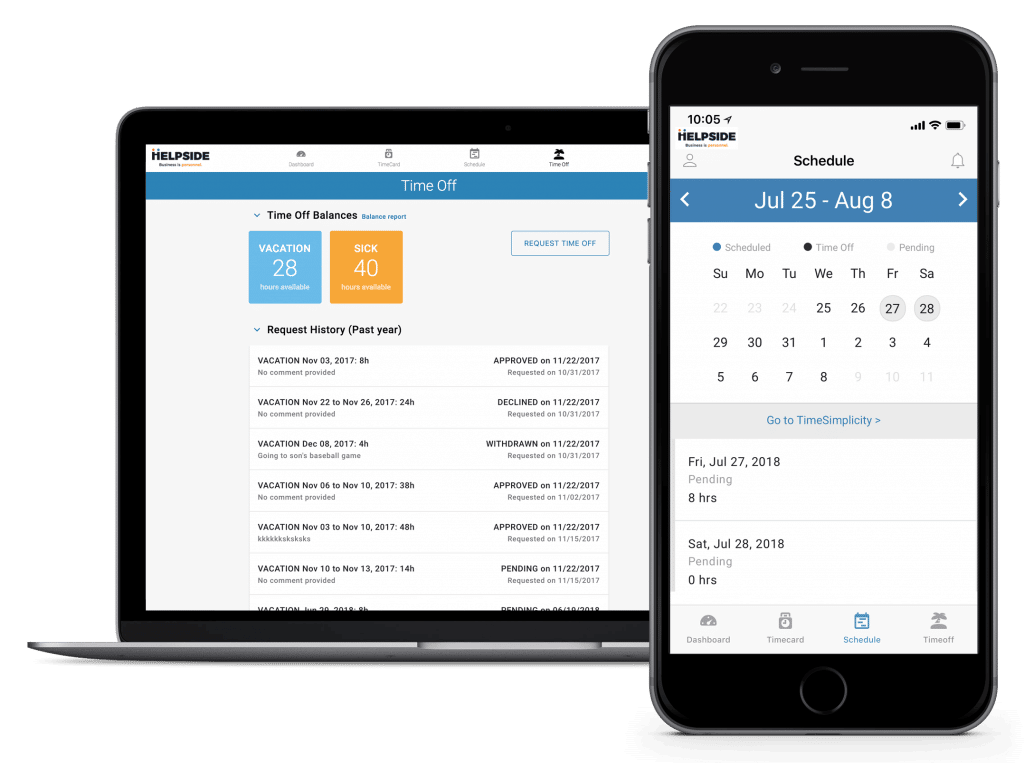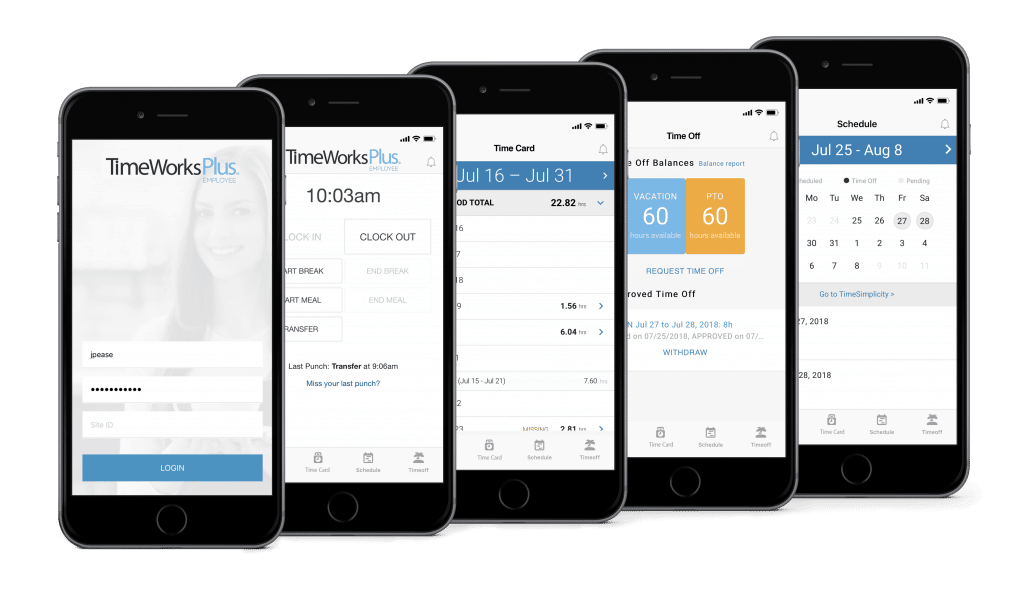Your Independent Contractors are Probably Employees

Do you employ independent contractors? Are you sure they qualify under the law?
While the DOL withdrew the Independent Contractor Final Rule in the spring of 2021, employers are still bound by the duties test that has been used for decades.
If you’re misclassifying, you are at risk of violating not only overtime, but many other regulations as well.
3 Key Findings About Classification Compliance
- The DOL recovered $139 million in overtime wages owed to workers last year. Misclassification is a factor in minimum wage, overtime, and FMLA violations.
- The DOL estimates that between 10% and 30% of employers misclassify their employees and independent contractors.
- A Human Resources Management System (HRMS) helps employers comply with DOL, FLSA, FMLA, and state/local labor laws. Plus, it helps companies avoid payroll mistakes.
11 Lame Excuses For Misclassification
Classification myths abound. The following are common excuses cited by employers. Remember, it’s the totality of the employee-employer relationship that determines the status. (None of these excuses will protect you from a DOL judgment if you misclassify.)
- The employee agrees to the classification.
- The employee brings their own tools.
- The employee works offsite.
- The employee has schedule flexibility.
- The employee signs an independent contractor agreement.
- You pay the employee off the books.
- You pay the employee under the table.
- You pay the employee in cash.
- The employee qualifies as a contractor under another law or jurisdiction.
- It’s “common industry practice.”
- Your employee is operating as an LLC or has an employee identification number (EIN).
Classifying Employees Incorrectly As Independent Contractors
Employers large and small are fined for classification problems. Let’s discuss some high-profile organizations.
Uber, Walmart, and Amazon
In London, a Federal Court has deemed Uber drivers as employees. Uber faced numerous lawsuits across multiple countries and states within the USA, where drivers were fighting for employment status. In California and New York, several individual drivers have been granted employee status.
Uber is not a unique case. In 2016, FedEx agreed to pay 240 million dollars to drivers that had been misclassified as independent contractors and employers.
Both Walmart and Amazon have been sued over their use of subcontractors to stock their warehouses as those workers stock goods exclusively for Walmart or Amazon.
Why Do Employers Misclassify?
Independent contractors carry much less cost than a regular employee. In addition, there are fewer laws governing the relationship between companies and independent contractors than there are governing the employer/employee relationship.
Hiring independent contractors saves employers on sick leave, predictive scheduling, and FMLA laws that continue to be passed each year.
However, misclassifying employees as independent contractors for the sole reason of saving costs can have significant financial repercussions for employers. The Department of Labor (DOL) continues to investigate and heavily penalize companies who misclassify employees.
The DOL estimates that between 10% and 30% of employers misclassify their employees and independent contractors. The purpose of this article is to review what makes the difference between an employee and an independent contractor.
Job Details, Not The Employer, Determines Contractor Status
However, in 2017, that opinion was withdrawn. Even so, there are several factors that determine if a worker should be considered an independent contractor or an employee.
6 Factors That Determine Independent Contractor Classification
Let’s discuss 6 key factors that determine whether a worker is an independent contractor or employee. All of these factors must be taken into consideration.
1. Is the Work Performed an Integral Part of Employer’s Business?
First, in the case of a dispute over employment status, the DOL or the courts would look at the degree to which an employee’s work is integral to the business. In other words, does the worker perform work that is critical to the business affairs? In the case of Uber, it would be hard to imagine that the company would continue without drivers.
An important part of this evaluation is determining how economically dependent the worker is on the employer. This appears to be a major factor in New York where many Uber drivers drive full time for Uber and get the majority of their income from Uber.
Independent contractors would typically rely on income from more than one company they work for. For example, in the case of FedEx, their drivers worked full time for the company and did not drive for any other delivery service.
2. Do Managerial Skills Affect the Opportunity for Profit?
Secondly, the DOL looks at the workers managerial skills and whether or not they play a part in the worker’s ability to profit.
As an independent contractor, the worker is considered to be a form of “self-employed” and as such should be able to make decisions that affect the profitability of their business.
This can include decisions in hiring other workers, purchasing equipment and other decisions.
3. The Relative Investment in Equipment and Facilities
Third, the degree to which the employer and the worker have invested in equipment and facilities.
Workers must share some risk of loss with the employer. Businesses often carry a risk of loss. With the FedEx drivers, the employees carried no risk of loss.
4. Level of Skill and Initiative
Fourth, workers must be skilled and able to be available in the open market to others.
For example, skilled employees generally cannot work for competitors. This is one argument that Uber uses to demonstrate contractor status for their drivers; that drivers can drive for multiple companies and not just for Uber.
5. Level of Permanency in the Relationship with the Company
Fifth, workers and their degree of permanency with the employer is another factor. Generally, employees are considered to have a more permanent relationship with an employer than an independent contractor does.
Even so, the DOL is quick to state that a non-permanent relationship does not mean a worker is not an employee as many employees have temporary status with the employer.
This point in the evaluation is more to disqualify a contractor from being considered an employee than to move an employee into an independent contractor position.
6. The Degree of Control by the Employer
Sixth, the Department of Labor looks at the degree to which the employer exercises control over the worker. This appears to be a major factor in the courts determining contractor or employee status.
In each of the cases that Uber has lost, the courts have pointed to the high level of control that Uber exerts. This ranges from the intense monitoring of drivers, to the rating system, and the requirements that drivers accept at least 80% of the rides while they are on the app.
Uber contends that under this same evaluation, their drivers decide on which hours to work and how many hours to work and have control. The DOL states that “You are not an independent contractor under the FLSA merely because you work offsite or from home with some flexibility over work hours.”
And so, this remains a vulnerability for companies like Uber that do exhibit control over workers even when they provide some level of autonomy.
Do a Classification Audit on Your Independent Contractors
Employers should carefully review their independent contractors to determine if any of those workers should be considered employees.
Many companies monitor their relationship with their employees through Human Resources, but fail to identify which division monitors relationships with independent contractors. Employers should identify who is responsible for managing the relationships with independent contractors and ensure compliance with FLSA laws.
WorkforceHub HRMS Simplifies Compliance
Companies are often tempted to misclassify employees is because of the additional costs and expenses typically related to employees.
However, misclassifying employees leaves the employer open to litigation, a tarnished reputation, and costly fines.
WorkforceHub minimizes much of the administrative and regulatory expenses.
Why Should Your Independent Contractors Use a Mobile Timekeeping App?
WorkforceHub is an integrated suite of HR tools. The timekeeping mobile app ca be used by onsite employees as well as offsite contractors.
Let’s discuss the advantages of using a mobile timekeeping app to track time for your subcontractors.
Competitive pressure favors companies who pay attention to subcontractor time and attendance.
Winning new bids, attracting quality subs, and profit depends on your level of control. Mobile time tracking apps provide unprecedented oversight and allow you to refine efficiencies.
8 Reason to Use a Mobile Time Tracking App for Subcontractors
1. Payroll Accuracy Reduces Costly Errors
Mobile time tracking provides a high degree of payroll accuracy. You cannot achieve this level of accuracy with paper-based time tracking. Mobile time tracking apps are more accurate and allow for direct data import for payroll.
The number of potential problems you can avoid in payroll processing is astounding. Mobile time tracking apps solve a lot of problems for less cost. It’s a no-brainer, but let’s dig a little deeper…
Traditional paper time cards are the fostering ground of payroll error. From poor handwriting to bad math, time cards nurture errors from the start. Next, consider that every employer collecting paper time cards have seen one go missing. It’s a regular problem on job sites around the world.
Finally, beware the inevitable transcription error. Manual data transfer causes payroll errors at a regular, consistent rate. It is the most significant area for concern in payroll processing from paper time cards.
A single error can cost your business in accidental overpayment. It can also create a paperwork mystery that takes hours to solve. Employees get upset and agencies get involved; it can be a real mess.
This reason alone is enough to convince a company with subcontractors to upgrade. If you aren’t compelled, brace yourself; there are 7 more good reasons to use a time tracking app…
2. Reliability Improves Trust and Company Security
Reliability is high on our list of reasons to use a mobile time tracking app for subcontractors. Much like accuracy, reliability has to do with the trust you can place in your records.
Subcontractors sometimes work in different job roles through the day. These employees need to keep accurate records for job costing and wage scale changes. You may also need to incorporate journaling for compliance with OSHA.
The reliability of these records can be critical to your business. In the event of an audit or dispute, reliable records are key to avoiding penalties and fines.
Mobile time tracking such as WorkforceHub’s Time And Attendance provide on-site convenience and cloud-based reliability. Employees who use paper time cards often work from memory at the end of the day or even later in the week. Completing time cards after the fact introduces errors and guesswork.
Cloud-based time tracking apps provide convenient, easy record-keeping. Employees record job role changes at the tap of the screen. Time tracking apps produce reliable real-time records that establish reliability and trust.
3. Mobile Access Makes Real-time Recording Convenient
Speaking of convenience, mobile time tracking is the ultimate in convenience for employees. Mobile time tracking apps are also a real timesaver for managers. Mobile access makes this double-feature benefit possible.
Onsite employees can use their own personal smartphone device for time tracking. When this is not the most convenient, on-site time tracking is possible with a remote punch clock device.
Mobile access to time tracking allows employees the convenience to keep records current. With instant access, employees can log breaks and meal times from their location.
Mobile time tracking apps help generate reliable data that you can trust. They also help reduce records disputes and payroll errors.
Mobile access also allows employees to access their own records. With employee self-service, employees can do more than clock in. Mobile subcontractors can use mobile time tracking to access their personal records as well.
Employee self-service (ESS) gives employees the opportunity to track their own time and attendance. They can also check and respond to schedules and overtime alerts. Mobile options like these reduce the impact on managers and help save time.
Mobile time tracking apps are better than paper time cards in many ways. Employees find them more convenient and easy to use. Managers enjoy accurate time and attendance records without the time-wasting hassles.
4. Real Time Data Tracking Provides Instant Alerts
Mobile time tracking apps record data to the cloud. This means that managers have access to real-time records from anywhere. Managers can track overtime hours and job costing in real-time as the workday progresses.
This isn’t always necessary, but there are some good reasons to use this important feature.
One important reason to watch real-time data is to avoid unplanned overtime. Overtime alerts can help you avoid costly subcontractor time overruns. Real-time tracking of time and attendance can help you maintain budgets.
Real-time data tracking will help you avoid disputes. It also helps you avoid unplanned overtime or contract breaches. Job codes and project codes can help you parse data and see an accurate picture of costs.
Spotting problems before they arise gives management time to respond to avoid problems. Mobile time tracking apps are the new crystal ball for your business.
5. Increased Profitability With Better Monitoring
When subcontractors use mobile time tracking, managers can keep a close eye on expenses. Time and attendance is a major expense for most projects. Tracking these costs is critical to maintaining control of expenses.
When you install mobile time tracking for subcontractors, you gain a remarkable ability to track time and attendance. Since this is a significant expense, you now have your finger on the pulse of profitability.
Overtime alerts, real-time tracking, and tools for analysis give your managers unprecedented oversight. The old adage that you have to measure something to improve it is front and center.
Mobile time tracking puts you in the driver’s seat. You have the ability to measure performance on a day-to-day basis and to make corrections when you need to.
Mobile time tracking for subcontractors makes this possible. You’ll appreciate the increased manageability and renewed focus on cost savings.
6. Project Costing With Accurate Recordkeeping
Mobile time tracking makes it possible to generate future-looking reports. These can be a big help in predicting expenses or bidding new work.
It is possible to create reports from paper time cards. The problem is that it takes a lot of extra time. Extra time means it doesn’t get done, and opportunities are missed.
Mobile time tracking allows companies to compile data with ease. Managers can generate reports with the click of a button. Built-in time codes can help you look at the data in meaningful ways.
Some of those ways can include looking at routine tasks and measuring the time it takes to complete them. This data can be used to refine estimates and perfect the estimating process.
The result is better, more accurate data that helps you establish the true costs of a project. This data can be used to accurately predict costs and improve bids.
7. Record of Work For Compliance and Legal Security
Mobile timekeeping apps generate an accurate record of work. Accurate and reliable records are important in the event of an audit. They can also be critical in a subcontractor dispute about payroll accuracy.
With mobile time tracking, employees are prompted to record breaks and meal times. This helps generate a reliable history of work time to the minute. Error tracking and intelligent clocking help avoid mistakes or missed punches.
With complete, accurate and reliable records, employee disputes are minimized. Audit-ready records mean you are prepared for any scrutiny, and in most cases are protected from accusations.
Employee self-service provides access to historical time and attendance. Employees can track their own time and are able to raise issues before they become a problem.
A reliable, accurate record of work helps both subcontractor employees and managers. With centralized data, both sides can see the same records which eliminate the need for correlation. An accurate and reliable history will help your company avoid compliance and legal troubles in the future.
8. Accountability For Subcontractors
Mobile time tracking reinforces accountability. Subcontractors are able to punch in and punch out from any location. This means there are no more excuses for missing time cards or missed punches.
Subcontractors are empowered to track their own time. They share responsibility for generating accurate and reliable data. This helps generate accountability for time and attendance tracking.
When employees feel empowered to manage their own time, they internalize the importance of keeping accurate records. Mobile time tracking becomes a convenient standard that employees will embrace. Your payroll and record-keeping efforts will improve and your business will enjoy savings in time and error avoidance.
Everybody wins.
Mobile Time Tracking is a Win-Win
Your business will benefit by adding mobile time tracking to your subcontractor management. Subcontractors will also benefit from added convenience and accuracy. Mobile time tracking holds a promise of increased efficiency and a stronger foundation of data on which to plan and grow.
Simplify HR management today.
Simplify HR management today.
Your Guide to GPS Time Tracking (Geofencing)
Updated March 19, 2024 When your business has employees working remotely or at various job sites, time tracking can become a challenge, particularly if the company relies on physical clocks for punching in and out. But offering a mobile app or web-based tracking solution can cause some concerns. You might wonder whether employees are clocking…
Read MoreThe Employer’s Guide to Federal & State Meal/Rest Break Laws [See all 50 State Laws Here]
Updated January 23, 2024 Under the federal Fair Labor Standards Act (FLSA), employers are not required to provide meal or rest break periods to employees. However, some states do have laws in effect dictating when and how often an employee should receive a break, as well as whether these breaks are paid or unpaid. In…
Read More













